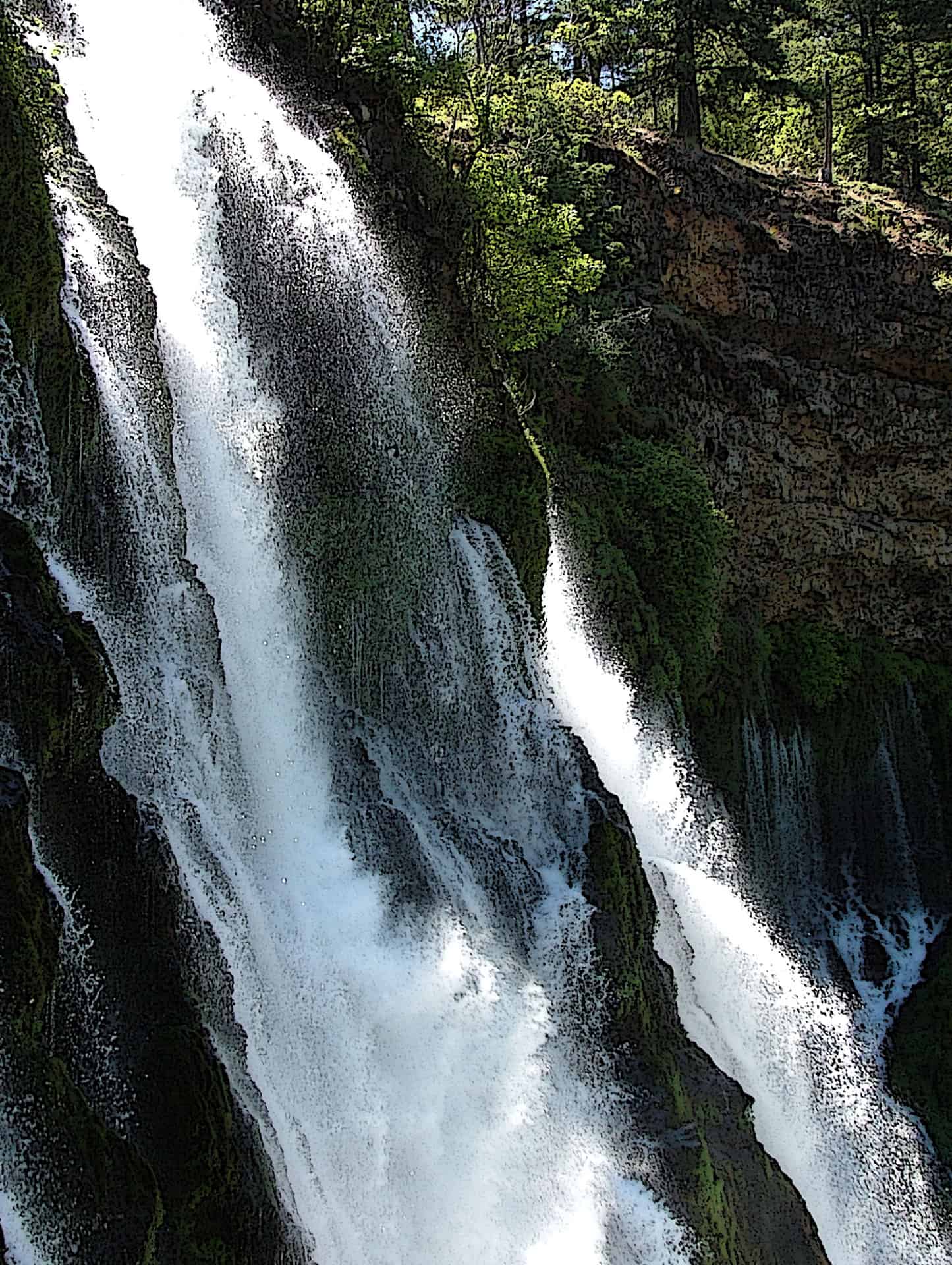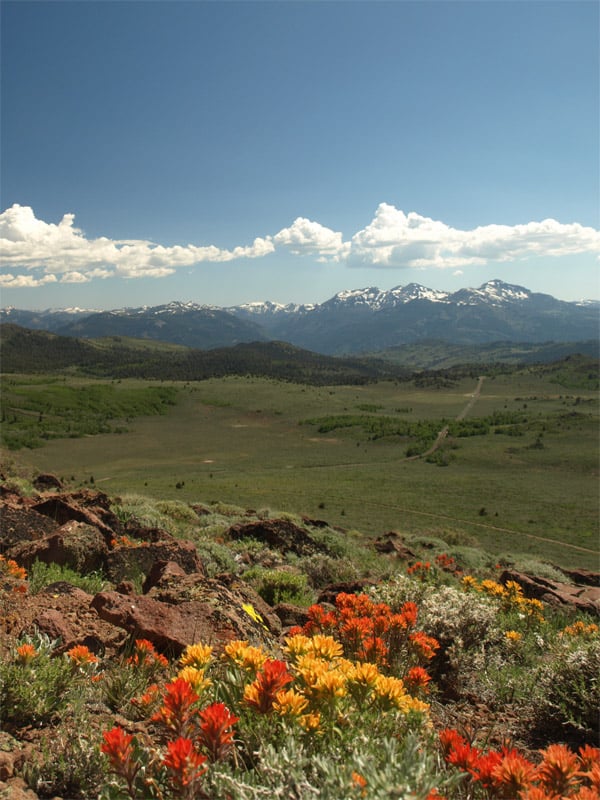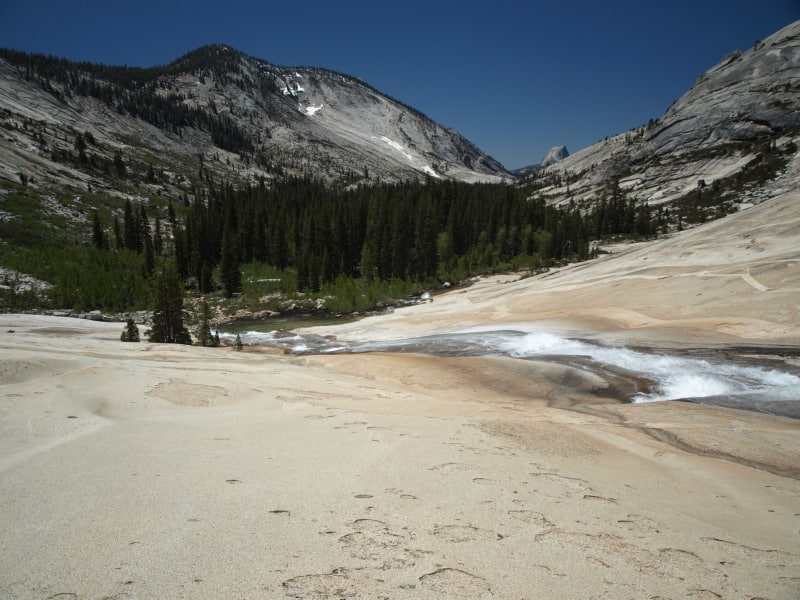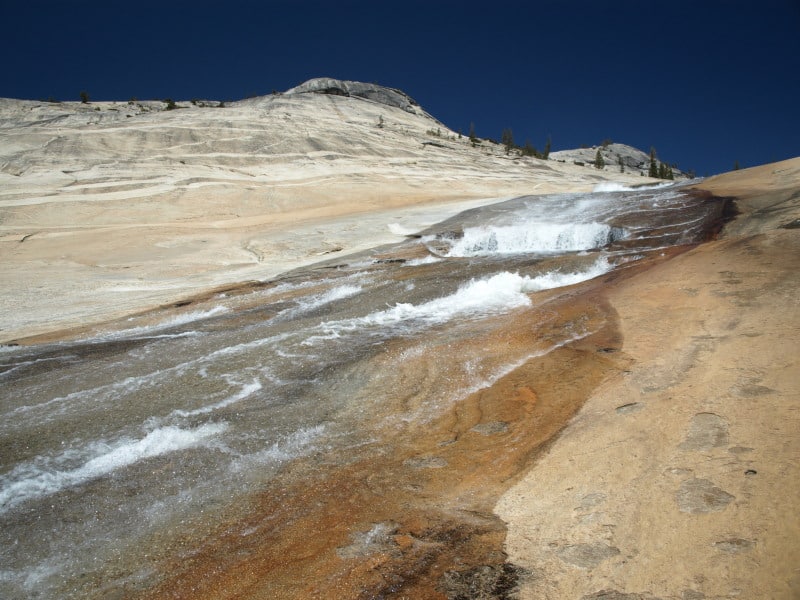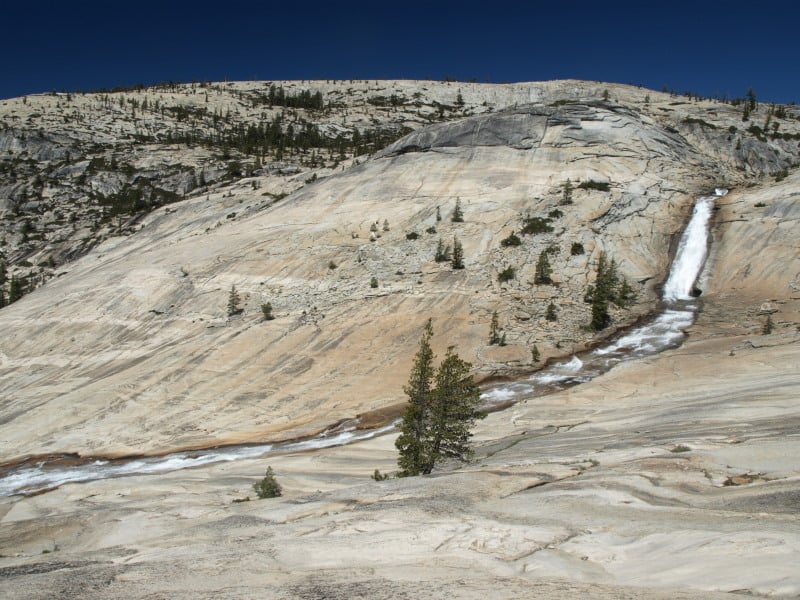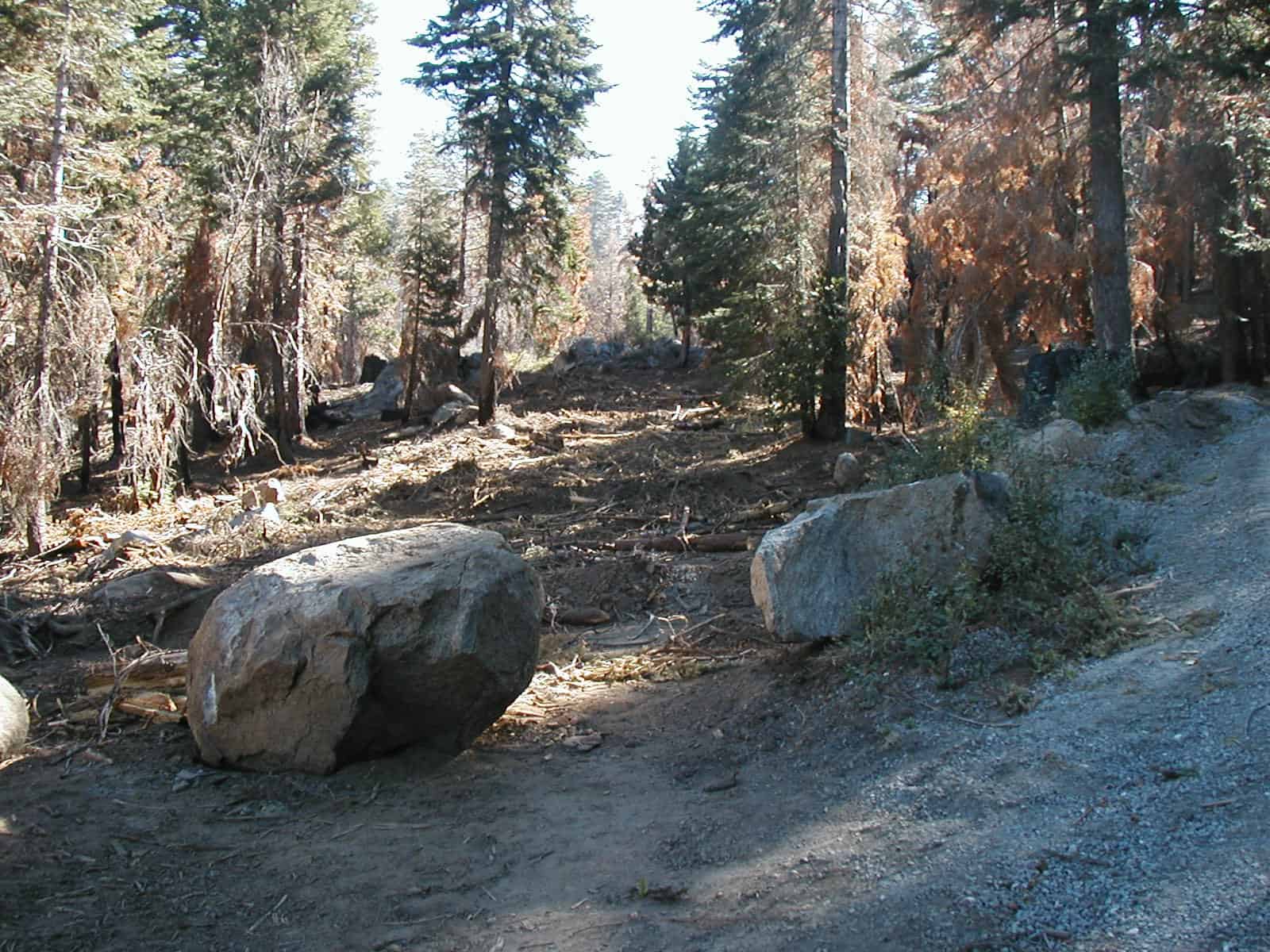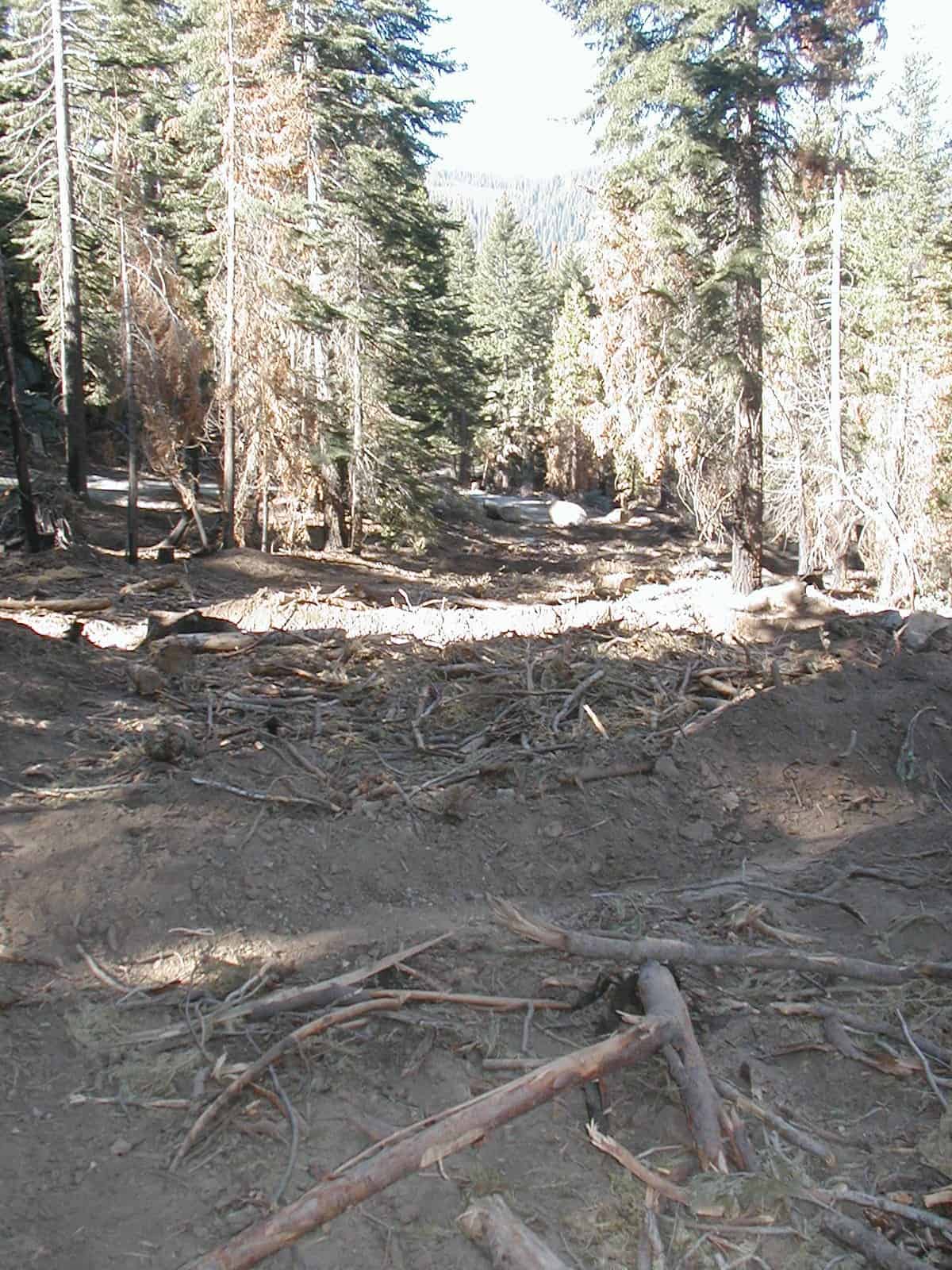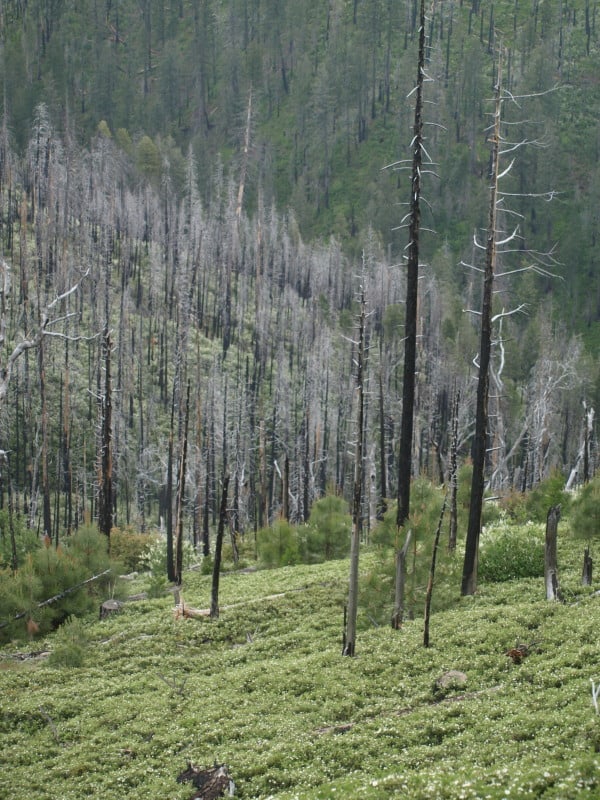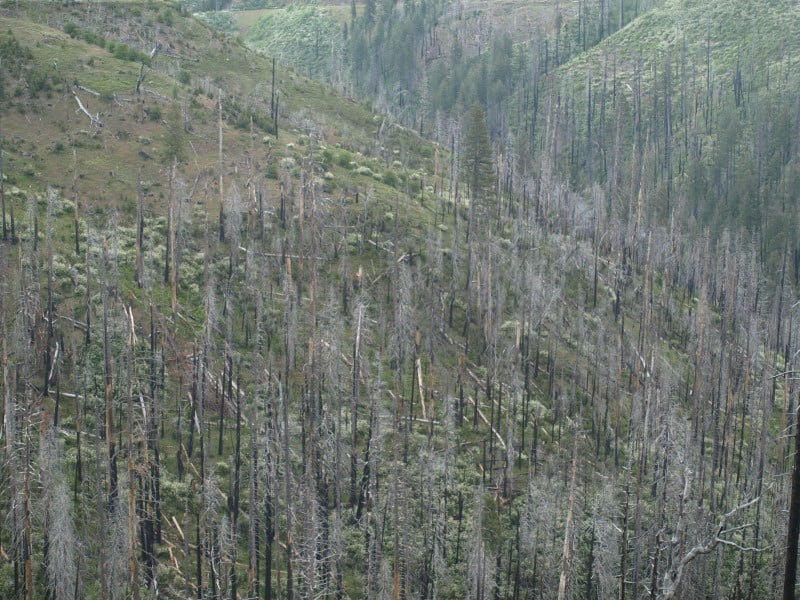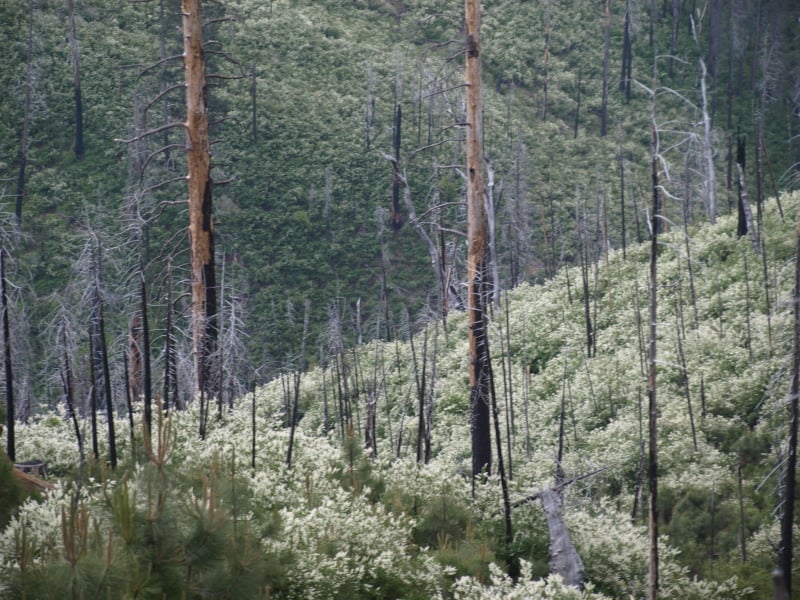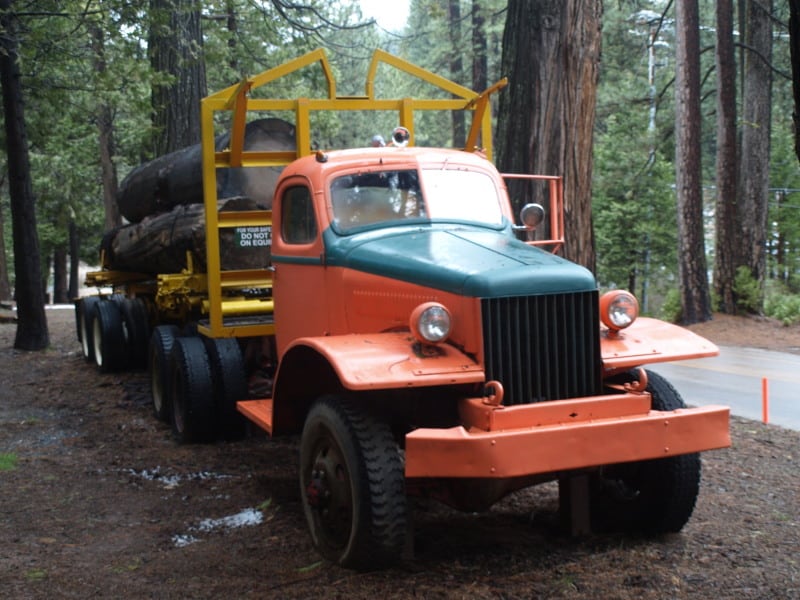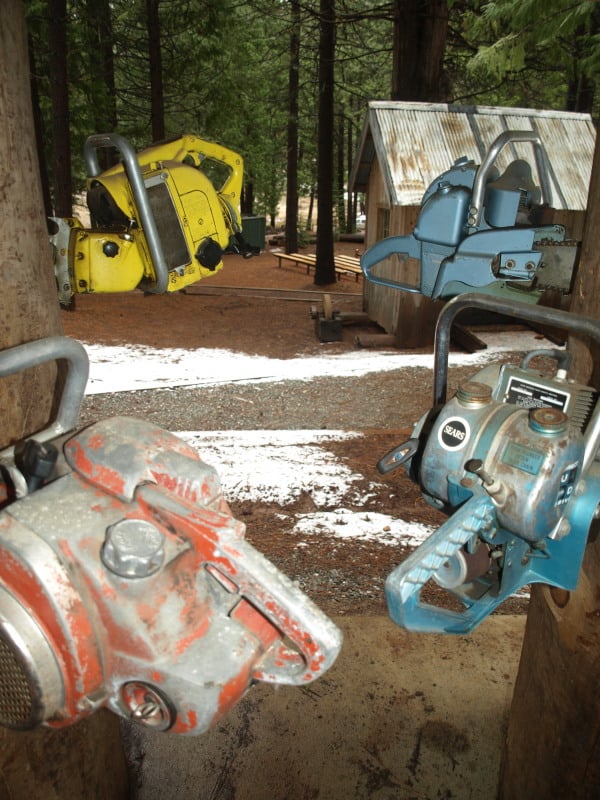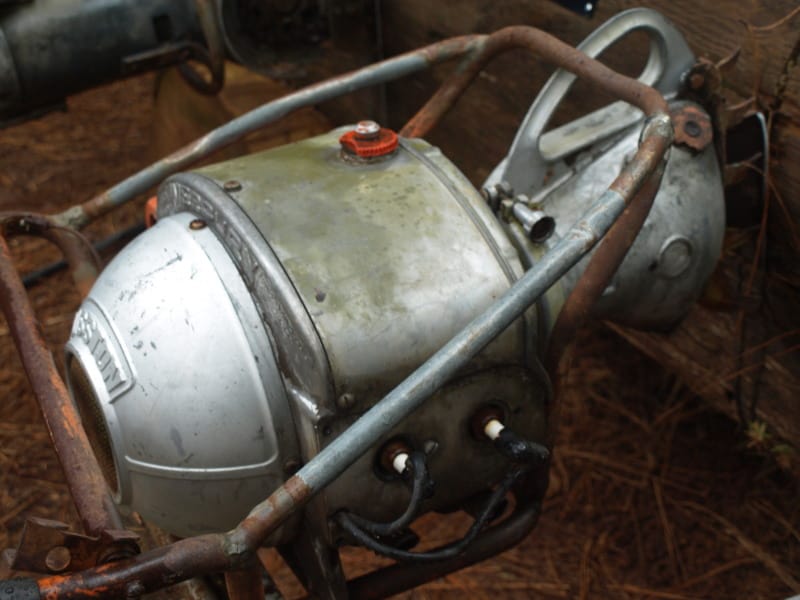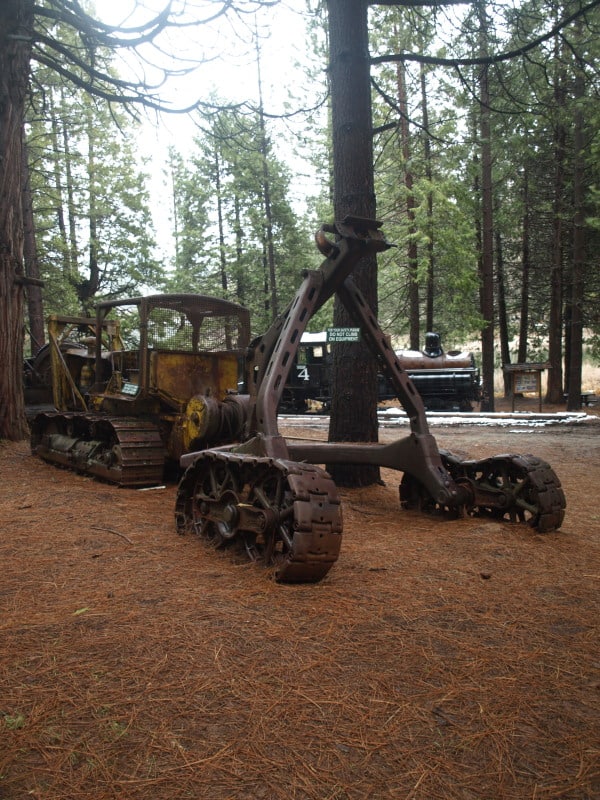Jun 20: In the U.S. Court of Appeals, Ninth Circuit, Case No. 08-17565.Appeal from the United States District Court for the Eastern District of California. The Appeals Court indicates that, “This court’s opinion filed on February 3, 2012, and reported at 668 F.3d 609 (9th Cir. 2012), is withdrawn, and is replaced by the attached Opinion and Dissent. . . The full court has been advised of the petition for rehearing en banc and no judge of the court has requested a vote onwhether to rehear the matter en banc. . . The petition for rehearing and the petition for rehearing en banc, filed on April 18, 2012, are denied.”
According to the Appeals Court, Plaintiff-Appellant Pacific Rivers Council (Pacific Rivers) brought suit in Federal district court challenging the 2004 Framework for the Sierra Nevada Mountains (the Sierras) as inconsistent with the National Environmental Protection Act (NEPA) and the Administrative Procedure Act (APA). The Appeals Court said, “The gravamen of Pacific Rivers’ complaint is that the 2004 EIS does not sufficiently analyze the environmental consequences of the 2004 Framework for fish and amphibians.” On cross-motions for summary judgment, the district court granted summary judgment to the Forest Service.
The Appeals Court rules, “Pacific Rivers timely appealed the grant of summary judgment. For the reasons that follow, we conclude that the Forest Service’s analysis of fish in the 2004 EIS does not comply with NEPA. However, we conclude that the Forest Service’s analysis of amphibians does comply with NEPA. We therefore reverse in part, affirm in part, and remand to the district court.”In a lengthy dissenting opinion, one Justice concludes, “. . .the majority makes two fundamental errors: First, it reinvents the arbitrary and capricious standard of review, transforming it from an appropriately deferential standard to one freely allowing courts to substitute their judgments for that of the agency. . . Second, the majority ignores the tiering framework created by NEPA. Because the majority ignores such framework, it fails to differentiate between a site-specific environmental impact statement (EIS) and a programmatic EIS that focuses on high-level policy decisions. . .”
Photos
Summer Arrives With a Vengeance
Spring ends with wildfires making people homeless. After the fires are contained and controlled, does it really matter if ignitions were man-caused or the result of “nature”? Actually, there seems to be a “natural component” of human-caused wildfires. We should not be welcoming this “natural” and inescapable component.
This view from an abandoned fire lookout on the Toiyabe National Forest shows a decreased snowpack compared to a “normal” June. The Colorado fires were expected but, the “whatever happens” strategy has once again failed us humans. There are MANY things we could have done to reduce or eliminate this tragedy but, it seems that some people prefer shade over safety. The Forest Service seems willing to reduce detection services, to save a few pennies.
http://maps.google.com/maps?hl=en&ll=39.014782,-104.692841&spn=0.114038,0.264187&t=h&z=13
This view of the Black Forest area shows how very little fuels work was done prior to this year. News footage seems to show that homeowners preserved the trees all around them. The aerial view shows why people wanted to build their homes there. They love their shade! It IS unfortunate that so many people’s homes burned but, there is ignored reality working here.
Similarly, are we really prepared to accept whatever damage or loss to our forest ecosystems? We do know that there will be big wildfires this year, due to weather conditions. Are we willing to let “whatever happens” (including arson, stupidity, auto accidents and any other human ignitions) determine the state of our National Forests? Remember, there ARE people out there who will sue to stop fuels projects that sell merchantable trees.
Pure Water and Clean Air
Before the summer wildfires come, we should take a moment to cherish the unspoiled landscapes that we still have, and the clean water that comes from them. Springtime in the Yosemite high country is magical, as well as being extremely buggy. I had seen this cascade over the years, and always wanted to get up close to it.
Tenaya Canyon is a dangerous place, with plenty of glacier-polished granite. Yes, many people have died, trying to navigate the canyon. This particular cascade has no historical name, amazingly enough. A waterfall interest group wants to name it Olmstead Cascade, due to its relative proximity to the mandatory tourist stop called Olmstead Point.
There is a warning sign at the top of this cascade, warning people that they need climbing gear, or face possible death. This area is relatively easy to get into but, not many visitors have the “woods sense” to safely navigate the Yosemite “Trail-less Areas”. I wonder how much it would take to punch a trail, similar to the Mist Trail, from Yosemite Valley to Tenaya Lake. There is significant rockfall in Tenaya Canyon, and they had a major one a few years ago, just east of Mirror Lake.
www.facebook.com/LarryHarrellFotoware
Closure and Rehabilitation of Temporary Roads
Here is a view of a temporary road used in a fire salvage portion of a green timber sale, on the Sequoia National Forest. The McNally Fire burned over 100,000 acres. Since this location is so remote, worries about vehicular entry are minimal. At the time, the logger and I thought these rocks would be adequate to block the road. I don’t think so, today. This was a temporary road before the fire, and there were some hydrological issues with re-using it. Of course, after a wildfire, the water table is recharged and new springs have popped up. It was very important that we laid out the restrictions and mitigations of its use. This is the result.
This view looks back down the road. You can see the waterbars and slash spread in between them. Even if the road is compacted, the water never gets a chance to gain erosive power. I’d bet that the road could be re-used again, when needed. The original road design wasn’t perfect but, I think there are very few impacts from us using it.
Hooray for Transparency!
Here is Region Five’s “Ecological Restoration Implementation Plan”. It is definitely worth a browse, especially if you are a local within or near any of these National Forests. Each Forest spells out what it is doing and what it is planning.
http://www.fs.usda.gov/Internet/FSE_DOCUMENTS/stelprdb5411383.pdf
(The picture is an old one, from fall of 2000. I had been here, salvaging bug-killed trees, in 1991. There was obviously additional mortality after that.)
From the Eldorado NF entry:
Goals include:
Maintain healthy and well-distributed populations of native species through sustaining habitats associated with those species
Use ecological strategies for post-fire restoration
Apply best science to make restoration decisions
Involve the public through collaborative partnerships that build trust among diverse interest groups
Create additional funding sources through partnerships
Incorporate the “Triple Bottom Line” into our restoration strategy: emphasizing social, economic and ecological objectives
Implement an “All lands approach” for restoring landscapes
Establish a sustainable level of recreational activities and restore landscapes affected by unmanaged recreation
Implement an effective conservation education and interpretation program that promotes understanding the value of healthy watersheds and ecosystem services they deliver and support for restoration actions.
Improve the function of streams and meadows
Restore resilience of the Forests to wildfire, insects and disease
Integrate program funding and priorities to create effective and efficient implementation of restoration activities
Reduce the spread of non-native invasive species
How Many Snags Do Birds Need??
With our discussions about burned forests and blackbacked woodpeckers, here are some views of the Power Fire, on the Eldorado National Forest. Initially, the wildfire seemed to be of mixed severity but, as the summer wore on, more and more insect mortality caused previously green trees to turn brown. After Chad Hanson took his appeal to the Ninth Circuit Court, this project was halted with about 75% of the dead trees cut. The court decided that not enough analysis was done regarding the blackbacked woodpecker, despite only 55% of the burned area in the project.
In this picture, seven years after it burned, most of those foreground snags were in a helicopter unit, with a fairly large stream buffer at the bottom. At least 5 times we marked additional mortality in that unit. Also important is the fact that we were cutting trees which still had green needles, using the new fire mortality guidelines of the time. As you can see, the density of snags should be quite sufficient in supporting multiple woodpecker families.
This patch of snags was clumped, below a main road and above a major streamcourse.
Another view of abundant snags within a cutting unit, and a protected streamcourse.
You can see that both large and small snags were left for wildlife. After 6 years, surely some snags have already fallen, as expected. Not every acre can, or should, have birds on every acre. Since this is predominantly a P. pine stand, the combination of high-intensity fire and subsequent bark beetles caused catastrophic losses of owl and goshawk habitat, including nest trees. You can also see that reforestation is, and will continue to be problematic, with all that deerbrush coming back so thick.
Best and Worst Federal Bosses
A decision last year to extend health benefits to temporary firefighters but not to all temporary workers proved frustrating to many employees. “It just makes no sense to limit it to firefighters,” Davis said. The Forest Service hires thousands of employees who work a few months out of the year maintaining trails, clearing brush, running recreational programs and maintaining facility grounds.
www.facebook.com/LarryHarrellFotoware
A Day at the Local Logging Museum Part 2
Next time I will have to explore the inside of the local White Pines Logging Museum. We do need to show the contrasts of old style logging, compared to today’s surgical style of thinning. In some parts of the country, railroad logging was impractical, due to steep and unstable terrain. In the Sierra Nevada, it was a challenge to find routes that powerful locomotives could climb (and descend!). Old railroad grades are considered to be cultural sites, and you can often find areas, along the tracks, where ancient trash was dumped. Some parts of old trestles still exist but, rails and ties were often removed and re-used.
Another collection of old and unusual chainsaws.
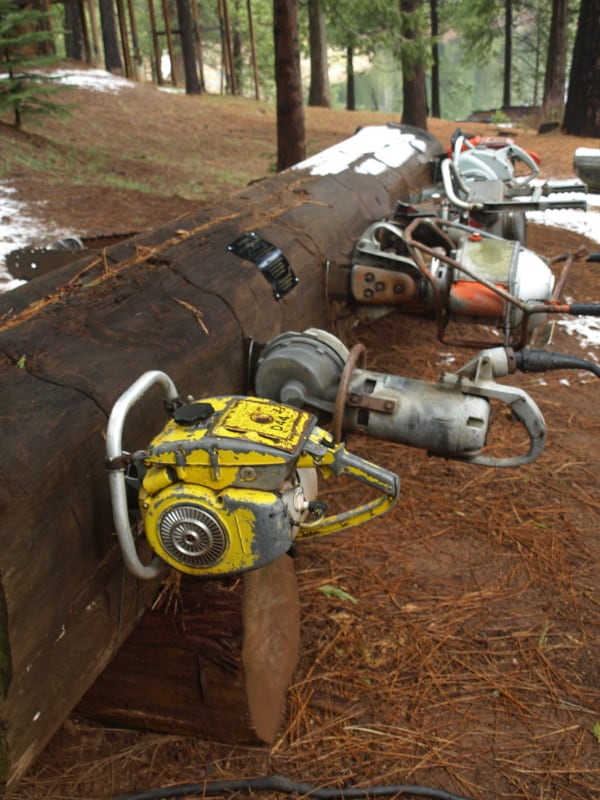
This one looks like it was heavy duty, in its day.
I’ll bet it was very important to strategically place the generator unit. I would think you would need about 300 feet of “extension cord”.
www.facebook.com/LarryHarrellFotoware
When a Preservationist Joins a Collaborative Group
Without making any value judgements here, I find this collection of meeting summaries to be fascinating. Chad Hanson is a full member of the Dinkey Collaborative Group, working to create a better future for the Sierra National Forest. It will be very interesting to see how this process will evolve, with Hanson’s input solidly in view. The level of transparency seems acceptable to me. At the same time, The Sierra is using the new Planning Rule to update their Forest Plan.
Mr. Hanson noted that there was no option for opposing the proposal, and also stated his concern for his opposition going undocumented. Mr. Hanson expressed two main concerns with the proposal. He stated that the proposal assumed high intensity fire results in fisher habitat loss, and commented that the proposal states an inaccurate assumption that trees experience almost complete mortality when a fire burns. Mr. Hanson expressed that the mortality rate was not supported by current data. Mr. Dorian Fougères assured Mr. Hanson that his position would be documented.
Click to access stelprdb5364086.pdf
There are other meeting notes available by searching for “Dinkey Collaborative Hanson”.
A Day at the Local Logging Museum Part 1
I have lived in the same location, here in the central Sierra Nevada, and I haven’t been to this very local recreation spot. White Pines Lake has a logging museum, with plenty of stuff to see and ponder. For example, did this trailer have bunks, to hold the logs on the trailer?
They have some saws not all that old.
And others that are impressively powerful. Imagine the guy who hauls this beast with him all day long.
Here is how big logs were skid in the past. Yes, it was important to keep the leading edge of the log elevated, to reduce skidding damages.
